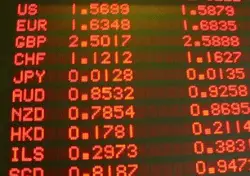Protectionism: Definition, Advantages & Disadvantages

Protectionism Definition
Protectionism is where nations aim to prevent or restrict the supply of goods coming into the country. Governments use various policies to prevent imports from international competition to prevent them competing with local businesses. Examples include subsidies, tariffs, quotas, foreign direct investment restrictions, and exchange rate controls.
Proponents of protectionist policies argue that domestic jobs will be lost to foreign competition without such policies being imposed. Over the years, this argument has gained traction as more and more jobs have been moved to the likes of China and Mexico. At the same time, advocates look to impose restrictions on imports in order to ‘protect consumers’ from poor quality overseas products. These policies have the intended effect, but also reduce competition and increase prices to the final consumer.
Key Points
- Protectionism is where a nation places strict regulations on imports coming into the country.
- A nation may adopt protectionist measures in order to protect domestic jobs, industry, national security, and to protect the consumer.
- There are many types of protectionism such as subsidies, restrictions on FDI, exchange rate controls, regulations, tariffs, and import quotas.
Types of Protectionism
When a nation takes a protectionist approach, it can use a number of tools. These range from tariffs and quotas, to exchange rate controls and regulatory requirements. Whilst most developed nations have come a long way from 19th Century Protectionism, most still have some level of protectionist policies.

Back in the 19th Century, protectionist countries relied on simple tools such as tariffs, quotas, or purely restricting all goods entering. These have now developed, with many nations using tools such as exchange rate controls, currency manipulation, or restrictions on Foreign Direct Investment (FDI). Let us look at these in more detail below.
1. Tariffs
Tariffs are one of the oldest tools that protectionist nations use. They are a tax on imports, with the leveraged rate stored in the ‘tariff schedule’ – a list of millions of products that have specific rates applied.

The use of tariffs is effective because it makes imports more expensive when compared to domestic suppliers. Consumers can then choose more expensive imports, or cheaper domestic alternatives. Ultimately, consumers choose cheaper domestic suppliers, thereby boosting employment. At the same time, the imported goods that get brought mean consumers are paying an additional tax (the tariff), which provides government with revenue. However, it comes at the cost to the consumer.
2. Import Quotas
A quota is a restriction on the quantity of a good that is allowed into the country. For instance, Mexico set a quota on imported sugar in 2010, with a limit of 250,000 tonnes.

Import quotas are applied over a set period – usually a year, with the same aims is as other restrictions; prevent international competition from destroying domestic business and jobs.
Import quotas are slightly more effective than tariffs because they completely restrict goods entering the country. By contrast, tariffs still allow goods to enter, just at a higher price. Yet at the same time, quotas allow goods to come in at a cheaper price than under a tariff – although in limited quantities. As a result, most protectionist nations will employ both a quota and tariff to offset the drawbacks of the other.
3. Subsidies
A subsidy is a payment by government to domestic producers. With relation to protectionism, governments employ two kinds of subsidies. The first is a domestic subsidy that provides domestic suppliers with funds to help reduce prices. By providing money to local businesses to help keep prices down, it makes them more competitive against imports.

This tool can be seen as slightly less aggressive and restrictive as it freely allows imports to come in. Yet at the same time it increases the competitive power of domestic businesses. The route is different, but the goal and results are the same.
If we now look at the second type of subsidy – an export subsidy. This is where government funds domestic suppliers to export their goods. In other words, government is paying so that its domestic firms export to other nations. The aim is generally to reduce consumption at home and protect consumers.
Export subsidies contrast to domestic subsidies in the fact that it looks to shift consumption abroad. Yet at the same time the goal is still to preserve the domestic firm.
4. Restriction on FDI
Some nations use strict FDI restrictions in order to prevent foreign nations entering the market. For instance, China requires some industries to link up with local suppliers before they are allowed to sell their goods. Elsewhere, India places investment caps on specific industries. For instance, media industries are only allowed to invest up to 24 percent, whilst FDI is completely banned in industries such as real estate and most agriculture markets.
5. Exchange Rate Controls
By controlling the exchange rate, a nation is able to dictate how much imports can cost. For instance, if the currency strengthens in relation to other currencies; imports will become cheaper as a result. So a protectionist nation would seek to weaken and/or control the exchange rate to prevent this.

There are several ways by which nations do this. One example includes printing and dumping currency onto the foreign exchange market. In turn this increases the supply in the market, thereby reducing its value.
Alternatively, a nation may buy up the supply of other currencies. As this reduces the supply, it contrastingly increases its value. In turn, this decreases the value of the domestic currency, thereby increasing the price of imported goods.
6. Regulations
Nations can prevent goods from coming in simply by imposing strict regulatory requirements. For instance, a banana has to be a certain size and shape, or a motor vehicle must have certain components attached.

On occasion, regulations can be so strict that importers would have to specifically manufacture goods for that nation. A new production process would need to be created to fulfil the requirements. And because of such, it is not worth the importer’s time, money, and effort. Consequently, it has the intended effect.
Advantages of Protectionism
Protectionism is defined as the restriction of international trade in order to benefit the domestic industry. Now, whilst protectionism has slowly faded away, particularly after the creation of the World Trade Organisation (WTO), it has started to gain some traction again in recent times.
Let us look at some of the arguments made for protectionism below:
1. Protect Industry and Jobs
One of the original aims of protectionism was to protect industry and jobs. The argument rests of the fact that if international competitors are allowed to compete, then domestic firms will be destroyed.
This argument is particularly pronounced in developing nations. For instance, a country like Vietnam would face fierce competition from brands such as Nike, Apple, and the like. If such developing nations let these big companies in, then a small business will not stand a chance.
Even so, the argument carries over to developed nations as well. Big international players are often able to produce at a significantly lower price, particularly if they off-shore to nations with cheap labor. We only need to look at the US and President Trump’s strong approach with regards to the manufacturing sector.
Significant numbers of automobiles are manufactured in Mexico and shipped to the US. As a result, manufacturers get cheaper labor and consumers lower prices, but at the cost of US jobs and investment.
The argument, therefore, is that jobs and domestic investment are more important than cheaper prices for the average consumer.
2. Protect the Consumer
One of the more recent phenomenons surrounding protectionism has been the development of ‘protecting the consumer’. As developed nations have advanced, they have left a large economic gap between them and developing nations.
For instance, the quality of life is significantly different in Germany as opposed to Sudan. This has occurred over many years as economic growth has continued in such developed nations, but is almost not existent in countries such as Sudan.
The argument from protectionists is that imported goods from such nations can be hazardous to the consumer’s health. As they are developing nations, they do not have the same standards, and thereby should not be permitted.
However, these protectionist policies to protect the consumer are not just against the first world and developing nations. They are also against other developed nations. For instance, the EU completely bans products with pesticides or herbicides. Yet at the same time, it is compliant in the US. This only goes to show the divergence in regulations between two developed trading partners.
3. Retaliation and Unfair Competition
As we have seen with the US-China trade war, protectionist policies have been used in retaliation to other nations. The argument from the US’ point of view was that the Chinese already had very strict and protectionist policies, whilst the US’ freely allowed most Chinese goods in.
Simply put, the trading arrangement was deemed unfair by the US. The US had few tariffs, whilst China still had many that prevented US competition. In turn, the US retaliated to unfair competition. At the same time, this resulted in further escalations.
So the argument for protectionist policies can be made on the basis to encourage other nations to reduce their trade barriers.
4. National Security
Another historical argument for protectionism is national security. We now live in an age where the last serious war was nearly 80 years ago. Yet regional wars, particularly in Europe, were commonplace. This gave the ‘national security’ argument more weight.
It is argued that should a nation become reliant on international imports, it also becomes defensively weak. For example, a nation may import 75 percent of its food. However, should a war start, those resources may no longer be available. Even if the imports are from a neutral nation, it is highly likely that a hostile enemy would take out any supplies.
As a result, the nation is weakened due to the destruction of supplies. So protectionism is applied so that a country is largely self-reliant in order for it to be able to react in a time of war.
Disadvantages of Protectionism
1. Higher Prices
Whether tariffs, quotas, exchange rate controls, or regulations are used, they can all affect the final price of a product. Tariffs are the most obvious because a tax is imposed on imported goods. These are paid for largely by the consumer as importers pass on the majority of this cost.
Other tools such as quotas and regulations restrict the quantity that is made available. Regulations can completely limit the supply and competition, so consumers will have to buy from more expensive domestic suppliers. Similarly, quotas can restrict supply. At the same time, because the supply is limited, the level of demand will drive up prices.
For instance, if Product A is being imported into Country A at $10, there may be 1,000 people who wish to buy it. In turn, 1,000 are produced. However, Product A now has a quota limit of 500. The demand has not changed, but the quantity supplied has.
As a result of the quota, only 500 can enter the market. Yet there is still 1,000 demand. Therefore supply and demand dictate that prices will increase to meet the new level of supply and eliminate the excess demand.
2. Less Choice
By restricting international competition, there are fewer goods coming into the country. This means less choice for the average consumer. For instance, the 2012 Skoda Fabia Greenline II is banned from the US. The reason being that it does not meet US regulations. However, it has been tested and is widely used on European roads.
At the same time, there are thousands of other products than do not meet certain standards. Whether those standards are reasonable or not is another question. Nevertheless, they subsequently reduce the choice to the average consumer.
3. Economic Loss
Protectionist policies impose an additional cost and loss on all parties. First of all, domestic consumers must pay a higher price for goods. At the same time, importers face a decline in demand, so international jobs are lost. For instance, the US-China trade war meant that US consumers paid a higher price whilst demand for Chinese workers is reduced.
So the Chinese unemployment increases and US consumers pay more. However, the counter-argument is that it saves US jobs and businesses. Now there is some validity to that claim. If the money sent to China doesn’t come back in either demand for US goods, or FDI, then the argument can be validated.
However, the reality of the situation is that when a US consumer buys cheaper Chinese goods, that money goes to a Chinese exporter. That money doesn’t stay with them indefinitely. It makes its way back to the US through either demand for its goods or in FDI.
What we see as a result is that Chinese demand drives employment in other industries. So jobs that may have been lost in one industry, are being created in another. At the same time, the FDI inflows also create employment in the relevant industry.
Although there is disruption, there is a net positive gain in the long term. Employees will have to shift to new industries, but the average consumer benefits from lower prices. By contrast, the only winner under protectionism is specific domestic workers. However, they too are consumers and consequently lose out too.
Related Topics
Protectionism FAQs
In the long-run, protectionism is not good for the economy. It makes consumers and businesses pay more. And whilst it may protect jobs in the short-term, the economy as a whole would be better served in allowing cheaper imports in. Although this may temporarily destroy some jobs, consumers benefit from lower prices. In turn, the income that would have been spent on the goods before can now be spent in other markets. In turn, employment is stimulated elsewhere in the economy.
1) Protect Jobs
2) Protect Business
3) Protect Consumers
4) National Security
5) Retaliation
1) Tariffs
2) Import Quotas
3) Subsidies
4) Restriction on FDI
5) Exchange Rate Controls
6) Regulations
About Paul
Paul Boyce is an economics editor with over 10 years experience in the industry. Currently working as a consultant within the financial services sector, Paul is the CEO and chief editor of BoyceWire. He has written publications for FEE, the Mises Institute, and many others.

Further Reading
 Debentures - Debentures are long-term debt instruments issued by corporations or governments to raise funds, typically offering fixed interest payments and repayment…
Debentures - Debentures are long-term debt instruments issued by corporations or governments to raise funds, typically offering fixed interest payments and repayment…  New York City Minimum Wage: The minimum wages impact on jobs - The situation looks dire for full-service restaurant workers. Since the increase to $13, the number of workers declined by over…
New York City Minimum Wage: The minimum wages impact on jobs - The situation looks dire for full-service restaurant workers. Since the increase to $13, the number of workers declined by over…  Classified Balance Sheet - A classified balance sheet is a financial statement that categorizes a company's assets, liabilities, and equity into current and non-current…
Classified Balance Sheet - A classified balance sheet is a financial statement that categorizes a company's assets, liabilities, and equity into current and non-current… 